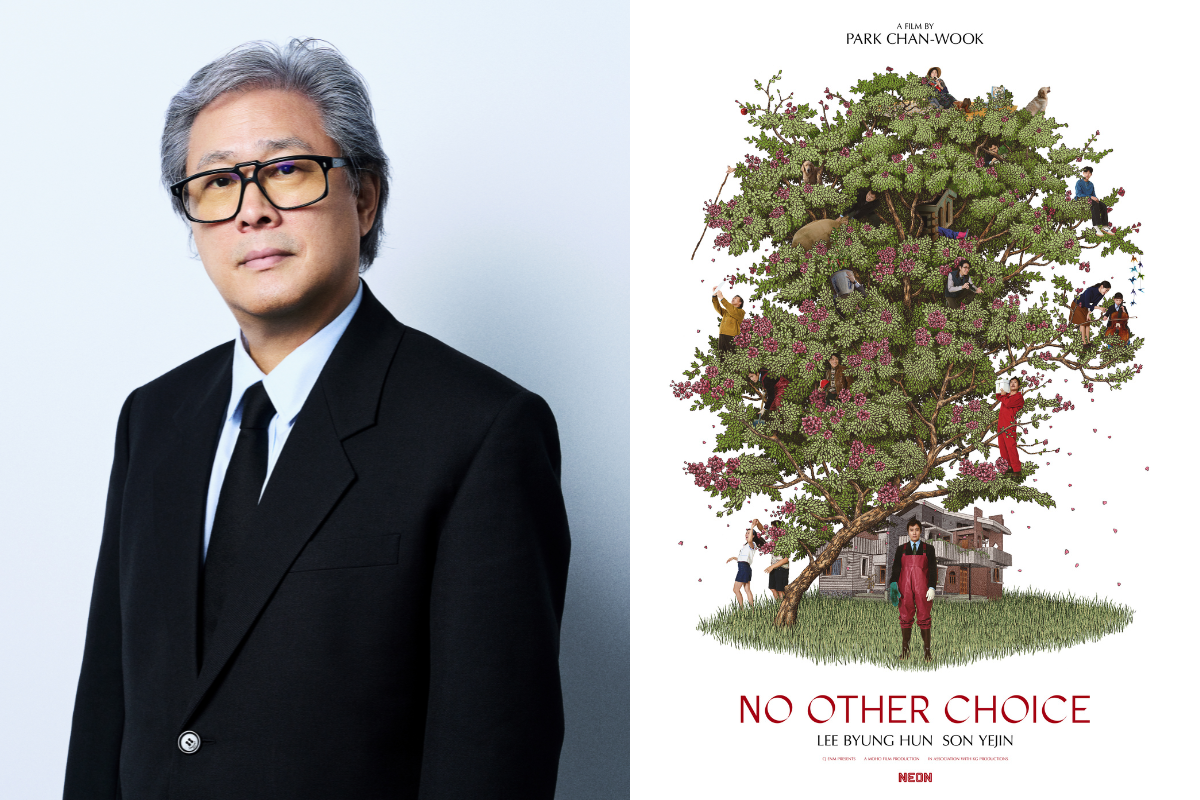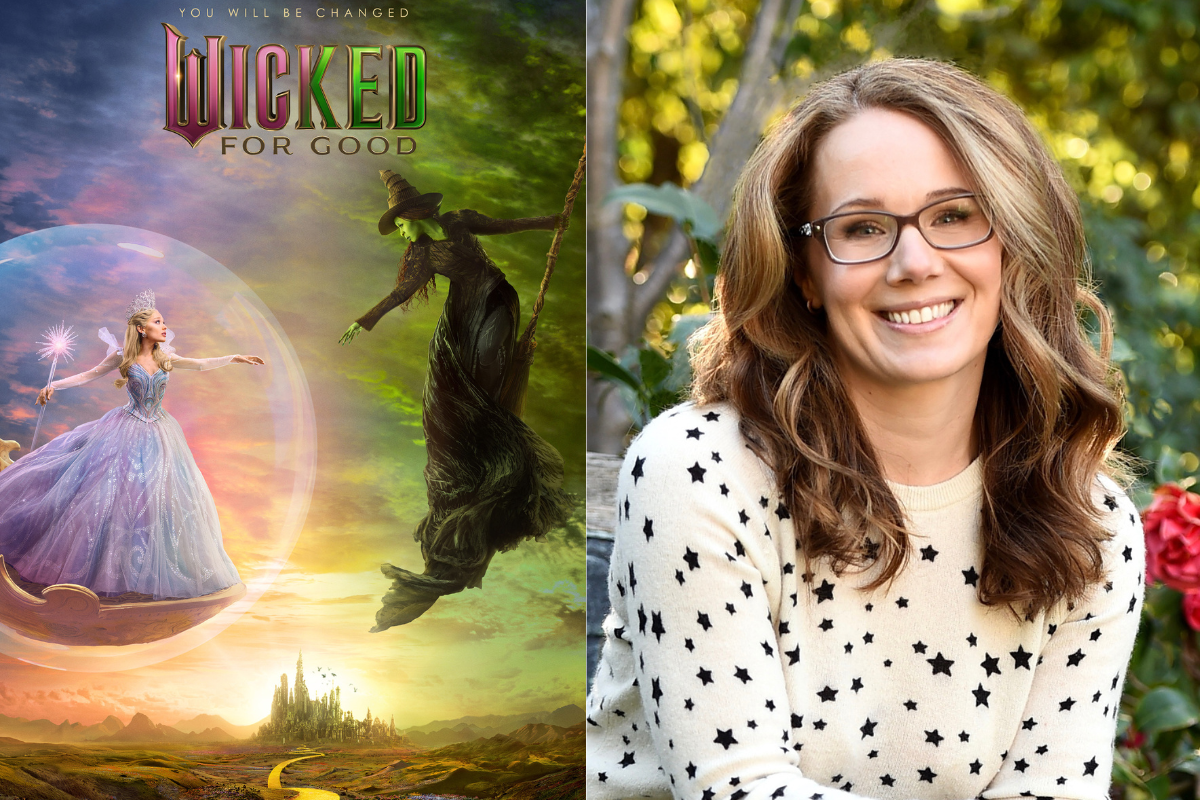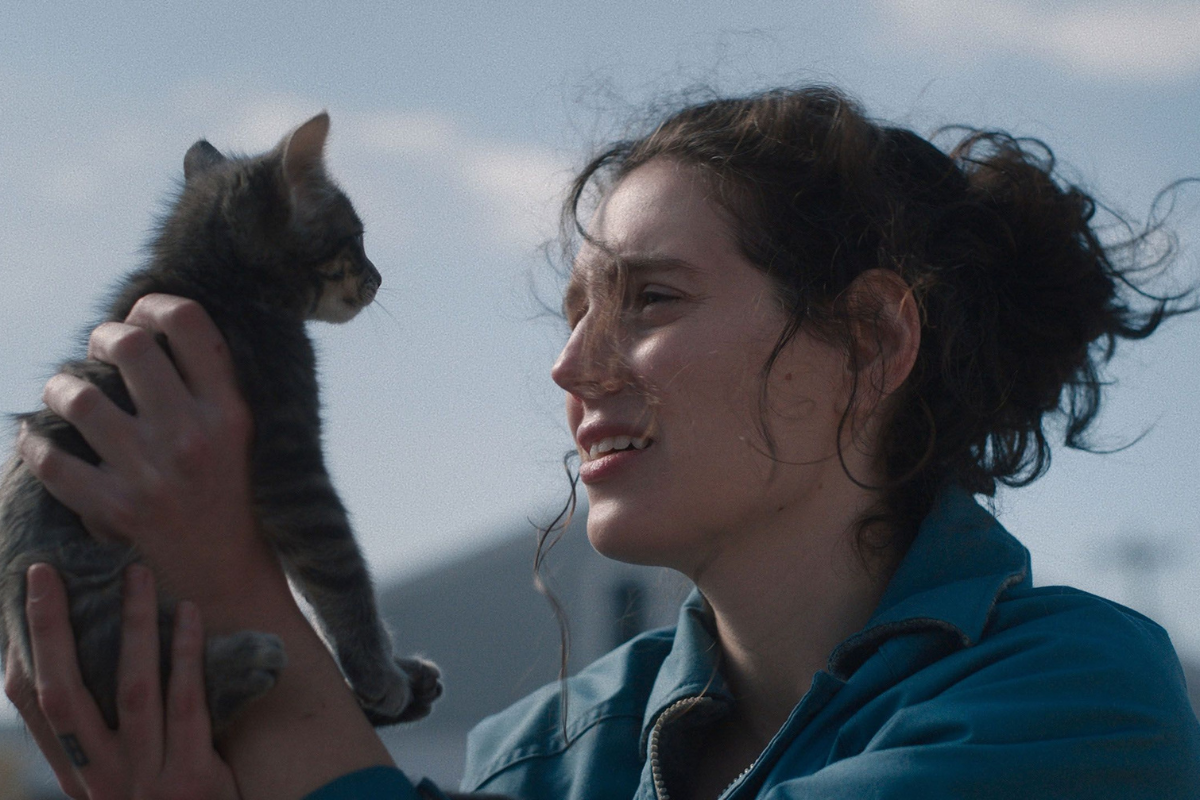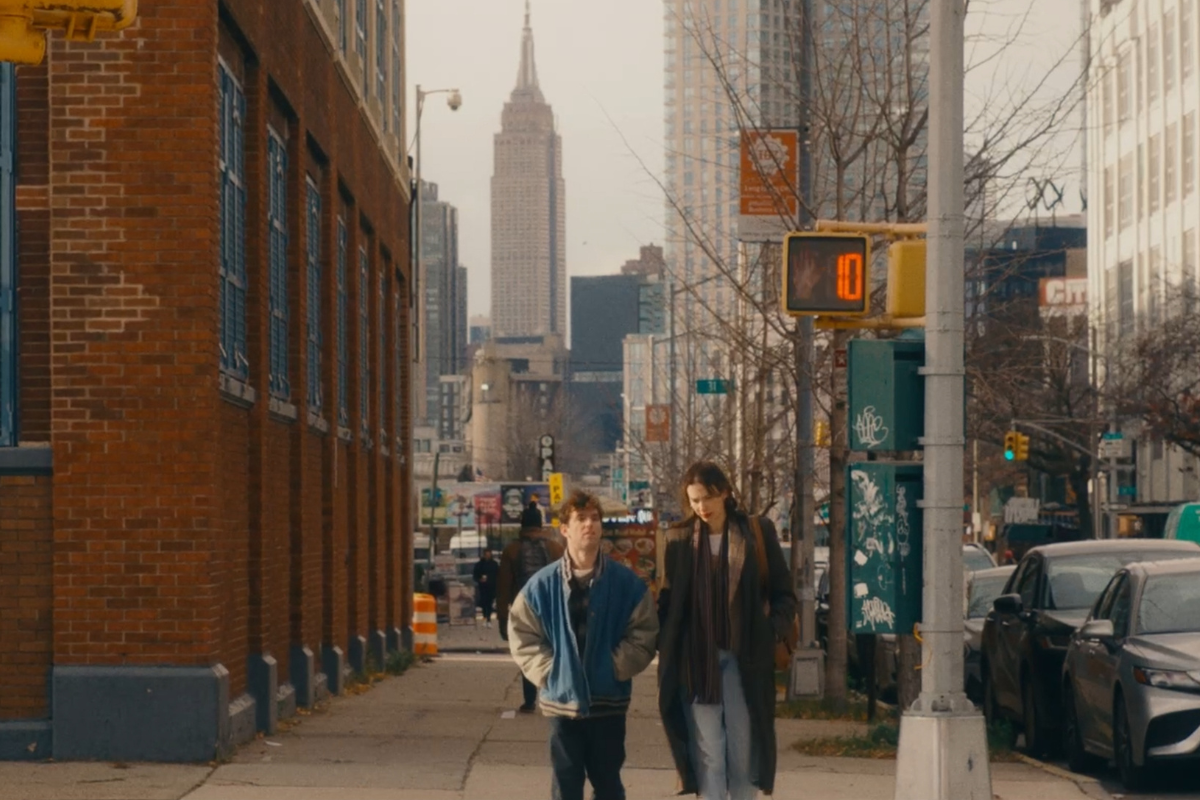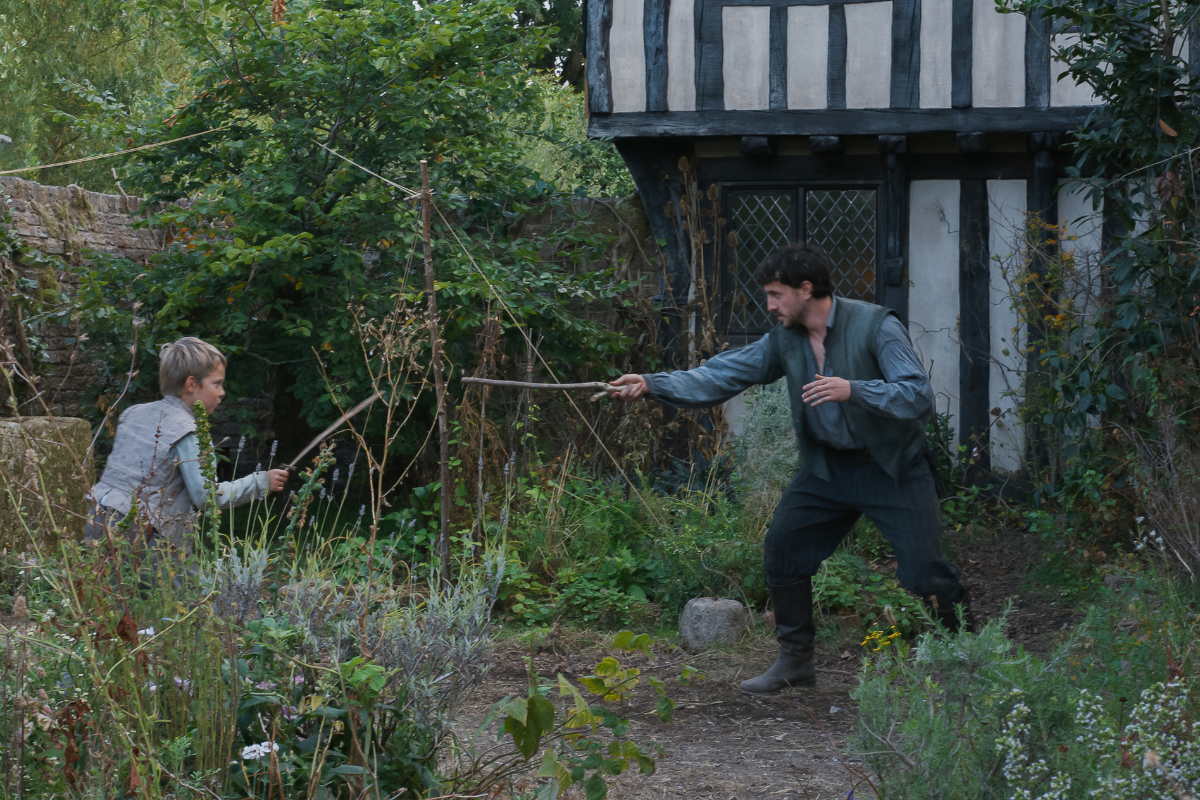Love, Identity, and the Cinematic Courage of Sincerity: A Conversation with ‘A Nice Indian Boy’ Director Roshan Sethi
Writer-director Roshan Sethi on finding universality in specificity, navigating representation, and why the Bollywood heart still beats strong.
Some films sneak up on you. They don’t crash in with high concepts or thunderous score cues. They arrive gently, with laughter, with truth, and with an unshakable sincerity that feels almost rebellious in today’s irony-drenched landscape. A Nice Indian Boy is one of those films.
When I first saw it, I was struck by how joyfully it embraced the familiar — a boy-meets-boy romantic comedy, yes, but one anchored in family, community, and a kind of old-school belief in love that feels both deeply Indian and universally human. It’s the rare film that wears its heart unapologetically on its sleeve, reminding you that sincerity itself can be radical.
Roshan Sethi, who directed the film, has a rare duality: he’s both a practicing physician and a filmmaker, two professions that demand empathy, discipline, and a deep curiosity about what makes people tick. And in A Nice Indian Boy, those worlds merge beautifully. Adapted from Madhuri Shekar’s play by Eric Randall, the film follows Naveen (Karan Soni), a first-generation Indian American, and Jay (Jonathan Groff), his white partner who, in the most endearing way, loves Bollywood as much as Naveen’s parents fear it. What follows isn’t a “coming out” story so much as a story about coming home, to oneself, to family, to love.
When I sat down with Roshan, what immediately stood out was his clarity of thought. He speaks about filmmaking with the same precision he likely brings to medicine, but also with a poet’s rhythm, unafraid of sincerity, unafraid of sentiment. Our conversation ranged from the film’s tonal balance to the importance of identity and specificity in art, and how Bollywood’s unabashed belief in love still informs his storytelling.
Rahul Menon: What first drew you to Madhuri Shekar’s play, and what made you feel it could be adapted into a film that speaks so personally to you?
Roshan Sethi: I was sent the play by Levantine Films (now named August Night). I had not read it before. But I loved it, and Eric Randall’s adaptation of the play. I think Madhuri has an amazing ear for generational South Asian dialogue, and for words that are both funny and emotional at the same time. Eric then gave all of these qualities a cinematic existence.
Rahul: You’ve mentioned that the film isn’t a “coming out” story but one about reconciling love and family. When did that thematic focus crystalize for you during the writing or directing process?
Roshan: I think that existed in the script, and I did my best to service it. It’s the key ingredient of the play, and the work of art that inspired the play: Dilwale Dulhania Le Jayenge. SRK, in that movie, says I will not marry you without your family’s consent. That automatically makes a love story not just a love story but a family story.
Rahul: In many ways, A Nice Indian Boy feels like a love story told through the lens of community. How did you strike that balance between the deeply personal and the culturally collective?
Roshan: I think DDLJ is again the connection between a specific story and a community’s story.
That connection, between the deeply intimate and the broadly communal, is what gives the film its emotional pulse. The humor sparkles, but beneath it runs a current of tenderness that feels unmistakably South Asian: that love isn’t love until it includes family, that belonging is a collective act.
Rahul: The film radiates warmth and humor without ever leaning into parody or stereotype. Was it challenging to find that tonal balance, especially when navigating both queer and South Asian identities onscreen?
Roshan: I find tone to be the hardest part of directing. I was lucky that we had so many legitimate comedy people in the movie – from Karan to Peter Kim to Zarna [Garg] to Sunita Mani. They all improvised, bringing lines and moments to the movie that didn’t exist in either the play or the script. The key was just keeping the comedy grounded enough that it belonged in the same movie as realistic dialogue delivered with an emotional intent. That meant comedy that always originated from character or circumstance. We were also strategic about improv. It has to belong to moments where it can be used in the edit (i.e. doesn’t step on other useful dialogue, fits in the flow of the story etc.)
Rahul: You’ve spoken about the difference between being “theoretically gay” and “practically gay.” How did your own lived experiences inform the emotional truth of Naveen’s character?
Roshan: I think I am still constantly negotiating how gay I am in every situation, and those experiences definitely informed the movie. I find this especially challenging when I work in the hospital because the white coat is so neutralizing and is intended, it sometimes feels, to obscure the reality of you. But being theoretically or practically yourself is probably difficult for everyone. Especially with love and family. When you bring a partner home to your family, you’re also bringing home more of yourself – you’re revealing what you like, how you love, what you tolerate, what you dream of, etc.
That answer stuck with me, this idea of being “practically yourself.” A Nice Indian Boy understands that identity is fluid, situational, and often shaped by the rooms we enter. But what makes it special is that it doesn’t treat that fluidity as a crisis; it treats it as a fact of life.
Rahul: Bollywood references and rhythms are woven throughout the film, sometimes playfully, sometimes reverently. How did you approach paying tribute to that cinematic heritage while crafting something contemporary?
Roshan: I grew up on Bollywood, almost exclusively, so every time we did something Bollywood with the movie it came from a genuine place of reverence. The amazing thing about Bollywood, unlike a lot of prestige American cinema, is that it is both very sincere and does not take itself seriously. It knows that its vision of love is excessive and unreasonable – and it does not care. It’s not that Bollywood is ironic or self-referential, which is a very Western attitude (often confused with sophistication). Bollywood just asks: what if everything was ridiculous and what if love was everything? We mimicked this approach.
On a related note, I am interested in how many of the Letterboxd reviews of the movie say something along the lines of: “cringe but I enjoyed it.” Cringe is a Western infection, worst among the young. It’s cringe to be overwhelmingly in love, to declare it, to receive it, to wish for it. How much safer to be disaffected and mildly bemused?
There’s something deliciously defiant in that. To make a film that rejects cynicism in 2025, that dares to believe in love, feels quietly revolutionary.
Rahul: There’s a gentle empathy in how the film portrays the parents—loving, confused, but never caricatured. What conversations or memories helped you shape that portrayal?
Roshan: That really all came from the play, and almost all of their dialogue is reproduced without alteration (the only alterations come from moments improvised by Zarna, including lines she suggested for Harish, notably: “we put this gay TV on for you.”). I didn’t draw from my own experiences, per se, but resonated with everything that was already in the material. I do think so much of directing is getting out of the way of the stuff that is good – it’s not actually your responsibility to put your fingerprints on every aspect of production. Sometimes good directing is being an invisible facilitator. I might take that too far at times, though.
As our conversation deepens, it becomes clear that Sethi’s restraint is part of his filmmaking ethos, a belief that directing isn’t about control but about trust. You feel that trust in every beat of A Nice Indian Boy, in the way silence sits comfortably beside laughter.
Rahul: The dynamic between Naveen and Jay is not only romantic but cultural—one reclaims Indianness through love while the other questions his connection to it. How did you guide that interplay between identity and intimacy?
Roshan: I was very nervous about the appearance of cultural appropriation. So it was important that we not go too far – that Jonathan be aware of the limitations of his connection to the culture – and that it feel grounded and not like a broad plot device. That occurred at a mostly microscopic level in dialogue and performance. But Jonathan is a really interesting performer because he can take huge swings (singing a song from DDLJ in a not-subtle way) without it ever losing its groundedness. That is the mark of truly skillful comic acting.
Rahul: Your background as a physician and storyteller is fascinating. Has your experience as a doctor—seeing people at their most vulnerable—shaped the kind of stories you want to tell on screen?
Roshan: The amazing thing about medicine is that you have to love everyone. You do not get to pick your patients. You don’t know who is behind every door. Whoever they are – whatever they believe – even if they’re offensive or have offensive beliefs – you have to take care of them. That’s so quietly radical that it of course informs my ability to write and direct. I always think you can feel this aspect of medicine in Chekhov’s writing (both his plays and short stories). You can just tell he was a doctor because of his universal, humanist empathy for all kinds of people.
That might be the most Roshan Sethi sentence imaginable: You have to love everyone. It’s also, in many ways, the thesis of A Nice Indian Boy.
Rahul: You mentioned that your mother was a major creative influence, and that she got you interested in reading. Was there a particular book, film, or artistic moment that first sparked your desire to tell stories?
Roshan: She did! She was always encouraging me to read. I actually grew up on epic fantasy. I was really, really into the book series of Game of Thrones (from 2000 to 2003, so far before the more recent craze). That kind of expansive, realistic, emotional, funny storytelling was really intriguing to me.
Rahul: Romantic comedies have long been dismissed as “light entertainment,” yet your film treats the genre with deep sincerity. What do you think modern rom-coms have lost, and what did you want to restore with this one?
Roshan: I think modern rom coms seem intent on trivializing themselves – making themselves goofy and making emotion more of an idea. The idea of full-throated sincerity comes again from Bollywood which, in its insane way, asks: what if love was EVERYTHING? Also, it’s very, very difficult to make a comedy. It’s so hard to make people laugh. It’s much easier to scare them, to thrill them, and to make them cry. And it’s far, far easier to make a moody, searing prestige picture than to make a fun, moving romantic comedy. One genre involves an excess of restraint – which, in the Western world, is confused for sophistication – and the other involves embracing the things we find most embarrassing about ourselves.
Rahul: You’ve said the film tested highest among straight white suburban mothers, something that points to its universality. Why do you think this story, grounded so specifically in South Asian and queer experience, connects so widely?
Roshan: Because love and family is a universal concern. I watch all-white and all-straight movies without any difficulty accessing their experiences. We’re not aliens to each other.
I work in medicine and I look at scans all the time. You can’t tell someone’s race from their scan. Because everyone looks the same on the inside to a microscopic degree. Your femur looks like my femur. So does a random white guy’s femur. Everyone’s muscles are in the same place. Everyone’s larynx has the same specific relationship to the hyoid and the thyroid cartilage and all these tiny coursing vessels and nerves. Of course we can watch each other’s art and relate deeply. Anything else would be very puzzling.
Rahul: There’s a wonderful tenderness in how you capture silence and pauses—the spaces between laughter and vulnerability. How intentional were you about pacing and tone when directing those moments?
Roshan: I think those pauses come out of dialogue that has subtext. When dialogue is all text – when people say what they mean or feel – the actors won’t have anything to act, and there is nothing to fill the silence. When dialogue is subtext – when people don’t say what they mean or feel – the actors act, the silences fill, and audiences lean in. I am always trying to make sure every line has subtext.
Rahul: What did working with actors like Karan Soni and Jonathan Groff bring to the film that you hadn’t anticipated while writing?
Roshan: Karan is a master at improvising. He invented a large percentage of his own dialogue in this movie. Jonathan is so sweet in a way that is utterly disarming. It’s a somewhat ridiculous character, but he wears him with full sincerity and believability.
Rahul: As both a filmmaker and a practicing physician, you occupy spaces that often mirror systemic inequities in different ways. What do you think needs to change, both structurally and creatively, for authentic diversity in storytelling to truly take hold in Hollywood?
Roshan: I believe that white people with real power in Hollywood are under the deep-seated, unconscious impression that the best writing/acting/directing comes from white people, and that any efforts made to include others must be done out of politeness and kindness and social justice. It does not occur to these people often enough that diverse artists might be vitalizing or that diverse viewpoints are key to good and commercial art. The decision-makers will pay for their biases with the increasing irrelevance of the content they produce. AI is a red herring - Hollywood will eventually be replaced by content creation. Instagram stars, routinely derided by Hollywood, are forged out of a more meritocratic environment that selects for real connection to audiences.
Medicine is full of systemic inequity. But it’s also much more naturally diverse than Hollywood. Right now — entering medical school classes are majority female. They’re full of Indians, Asians and Nigerians. These demographics exist because these demographics have the highest MCAT scores, as is plainly clear from nationally published admissions data. Meritocracy has produced diversity. The opposite is occurring in Hollywood. There is not even the semblance of a meritocracy. White powerful men are convinced to a delusional extent of their worth and their taste.
Rahul: And finally, as someone who moves between medicine and filmmaking, how do you see the next phase of your artistic journey? Are there more stories you feel compelled to tell within this intersection of culture, family, and love?
Roshan: I think I’ll always want to make movies in this space because I grew up on Bollywood. The industry is extremely racist, and at the moment not interested in gay stories or Indian stories. So I don’t know how I would get more movies like A Nice Indian Boy made in the current marketplace. Hollywood, full of fear during this industry-wide recession, is leaning back towards what feels safe to them: art that is empty of identity and specificity. This will ultimately (and ironically) cost them more audiences. At the same time, content creation will give birth to a million very specific voices anchored in identity, which is the case for a lot of great art.
There’s something fitting about ending on that note, equal parts hopeful and clear-eyed. A Nice Indian Boy may be a small film in scale, but it has the conviction and generosity of something much larger. In a cinematic moment that often rewards irony, Roshan Sethi’s work is a reminder that sincerity, love, laughter, vulnerability, can still feel radical.
Because sometimes the nicest stories are the bravest ones.
A Nice Indian Boy is now available to own or rent on Digital.


